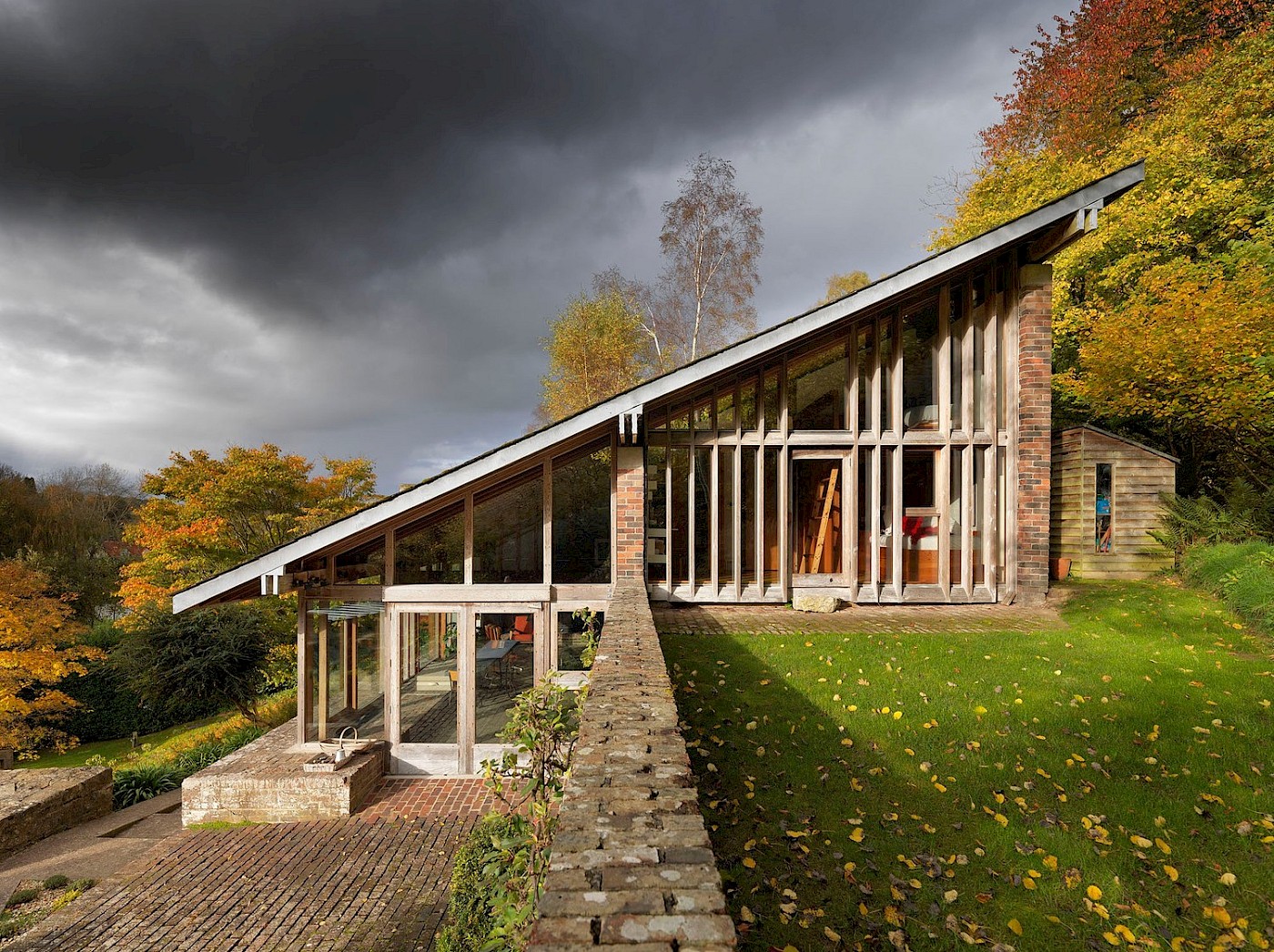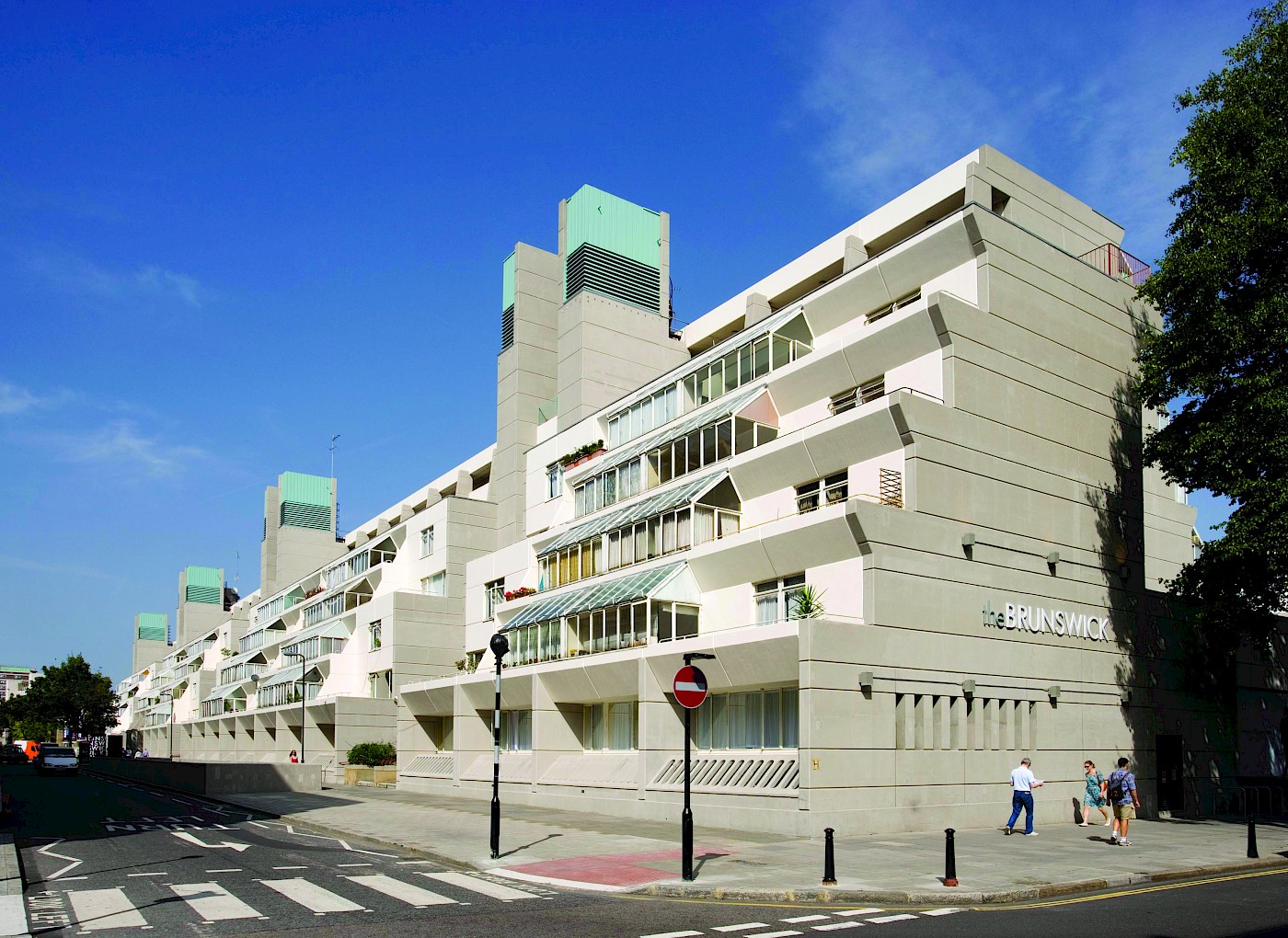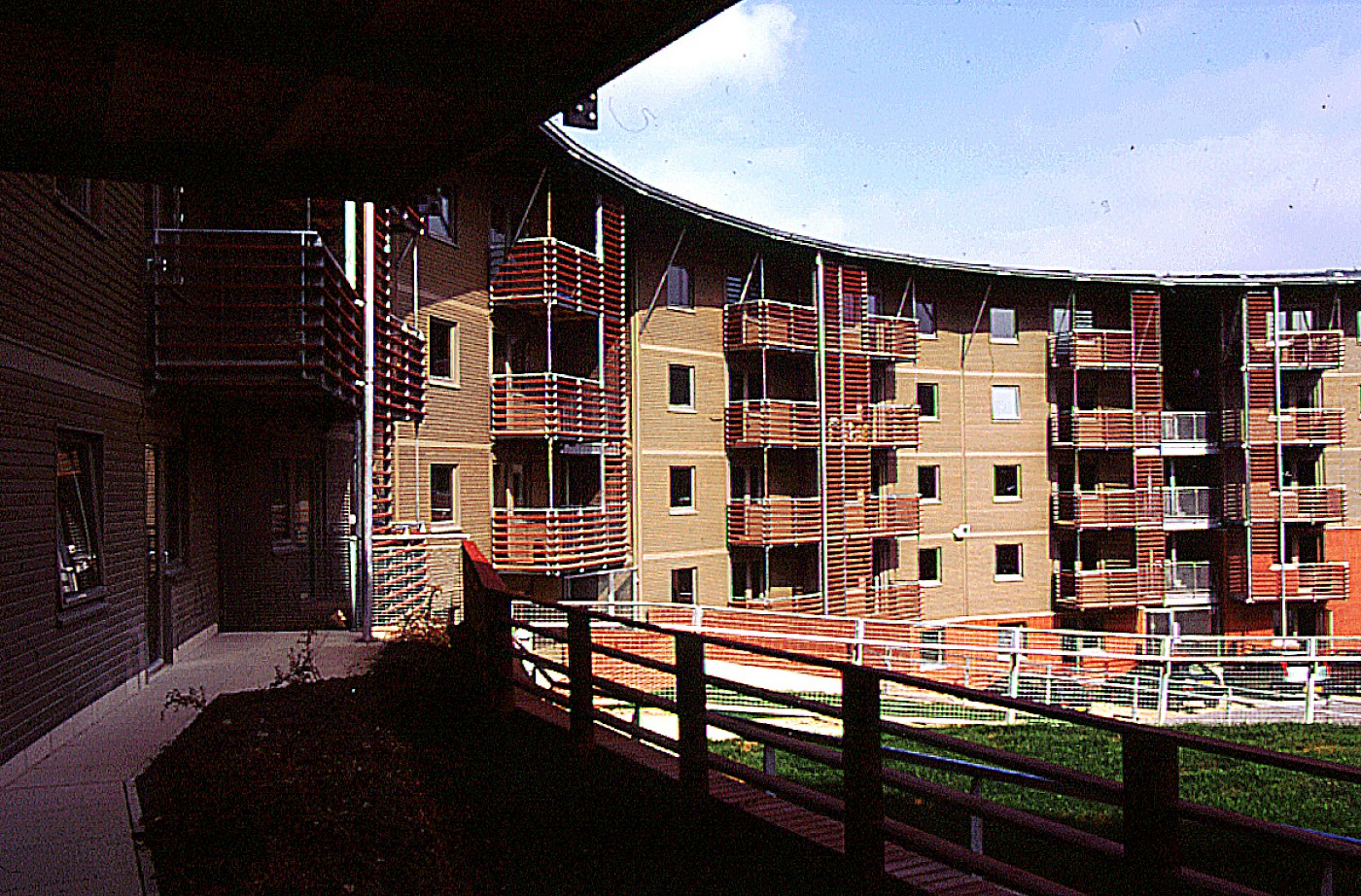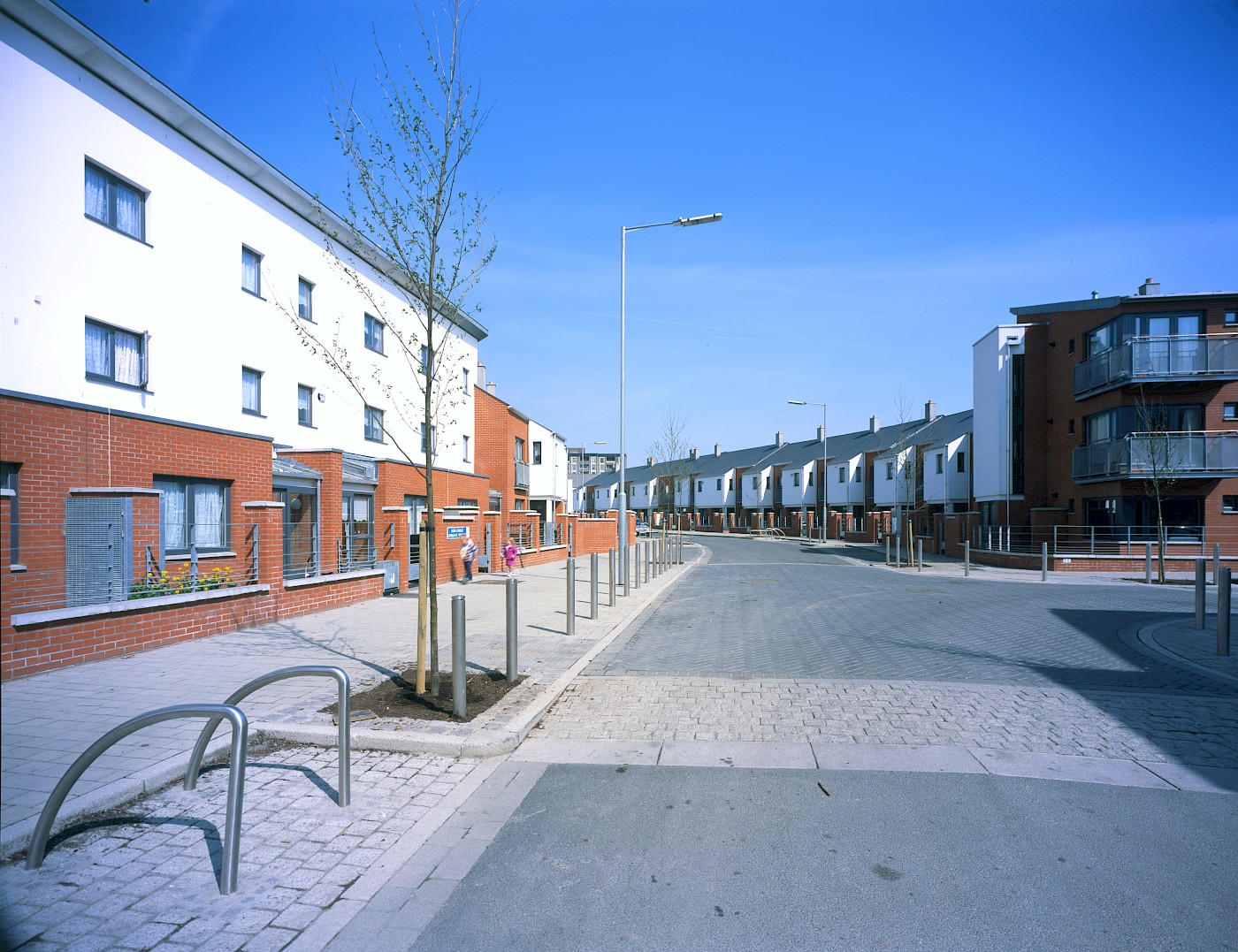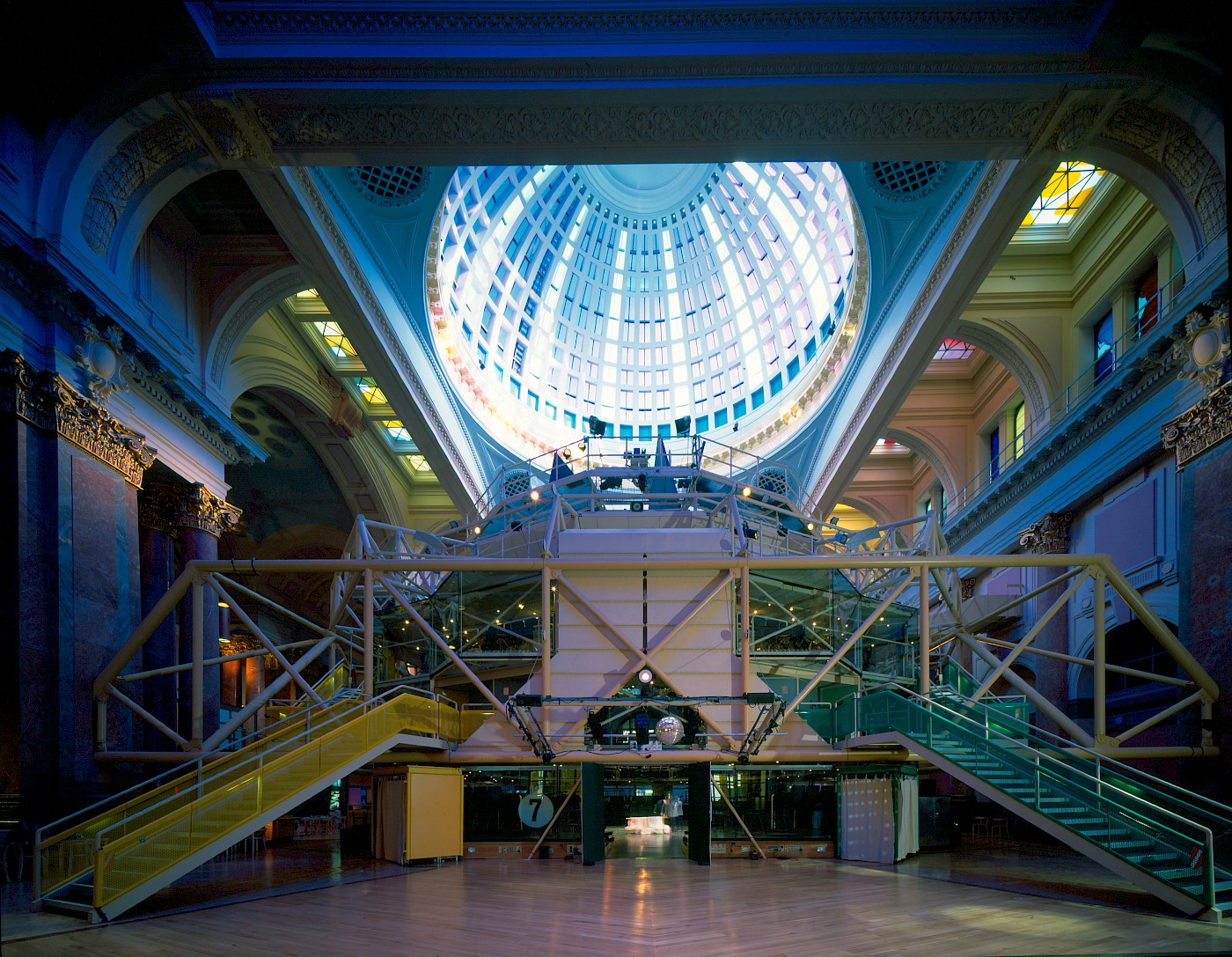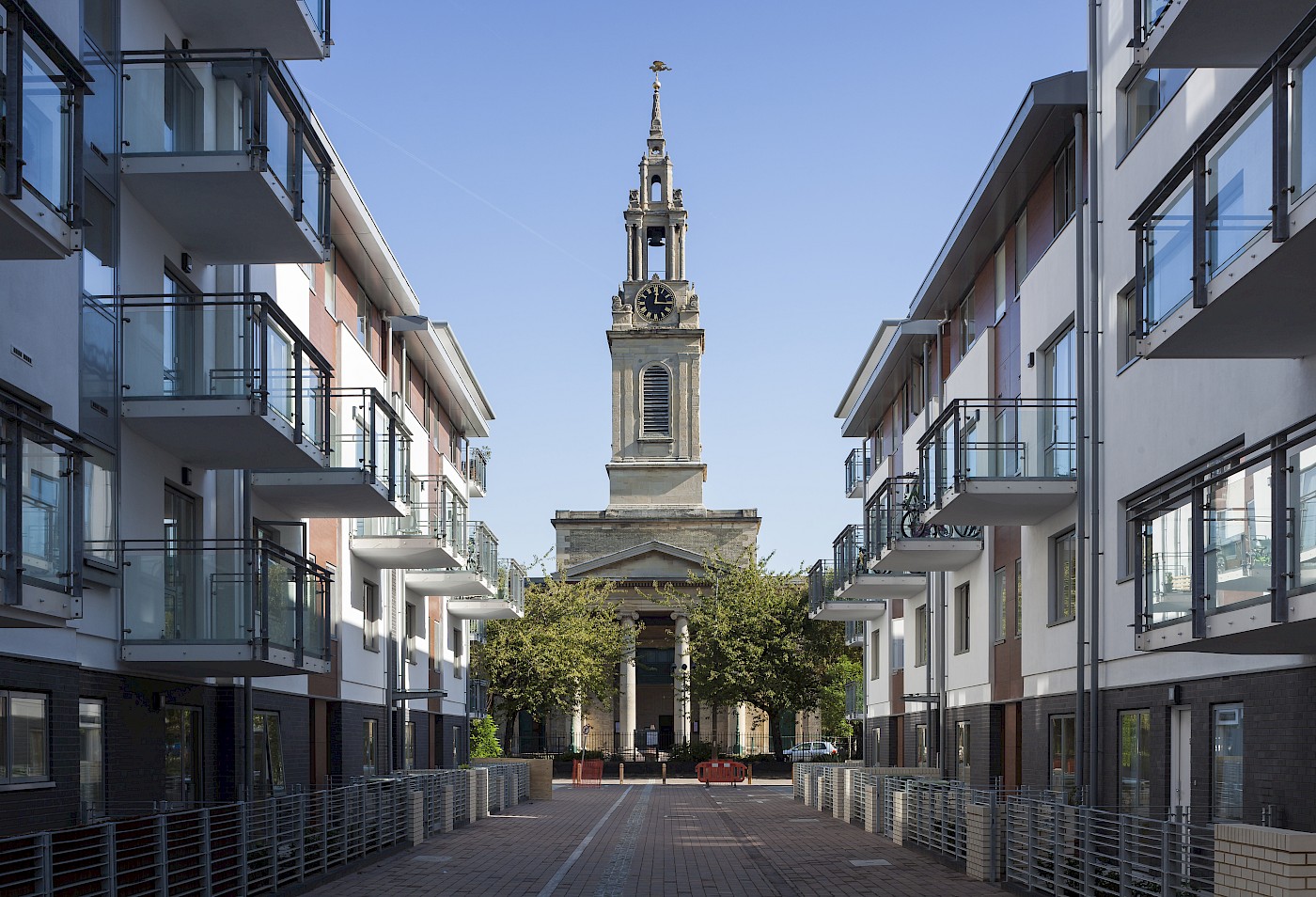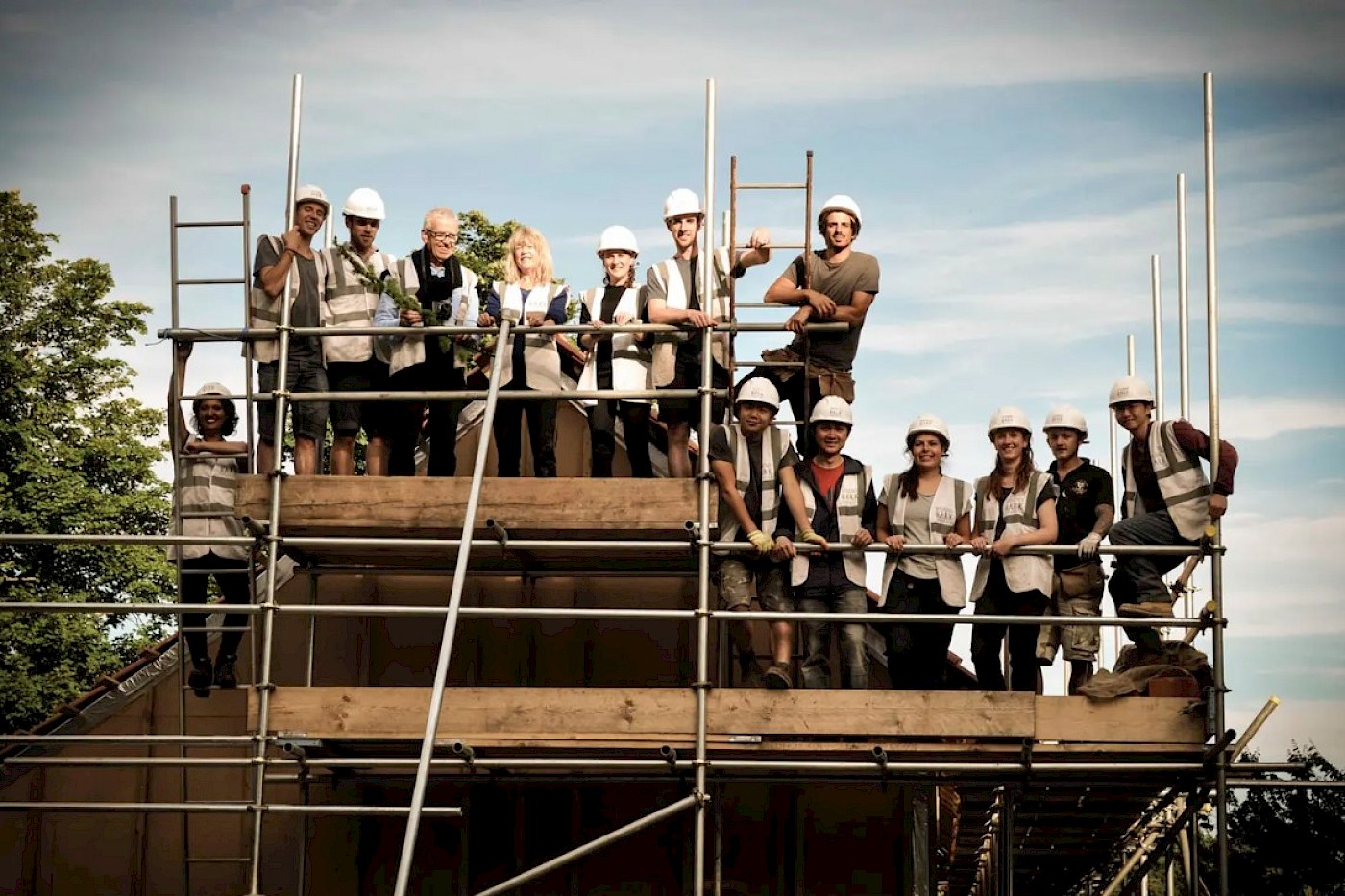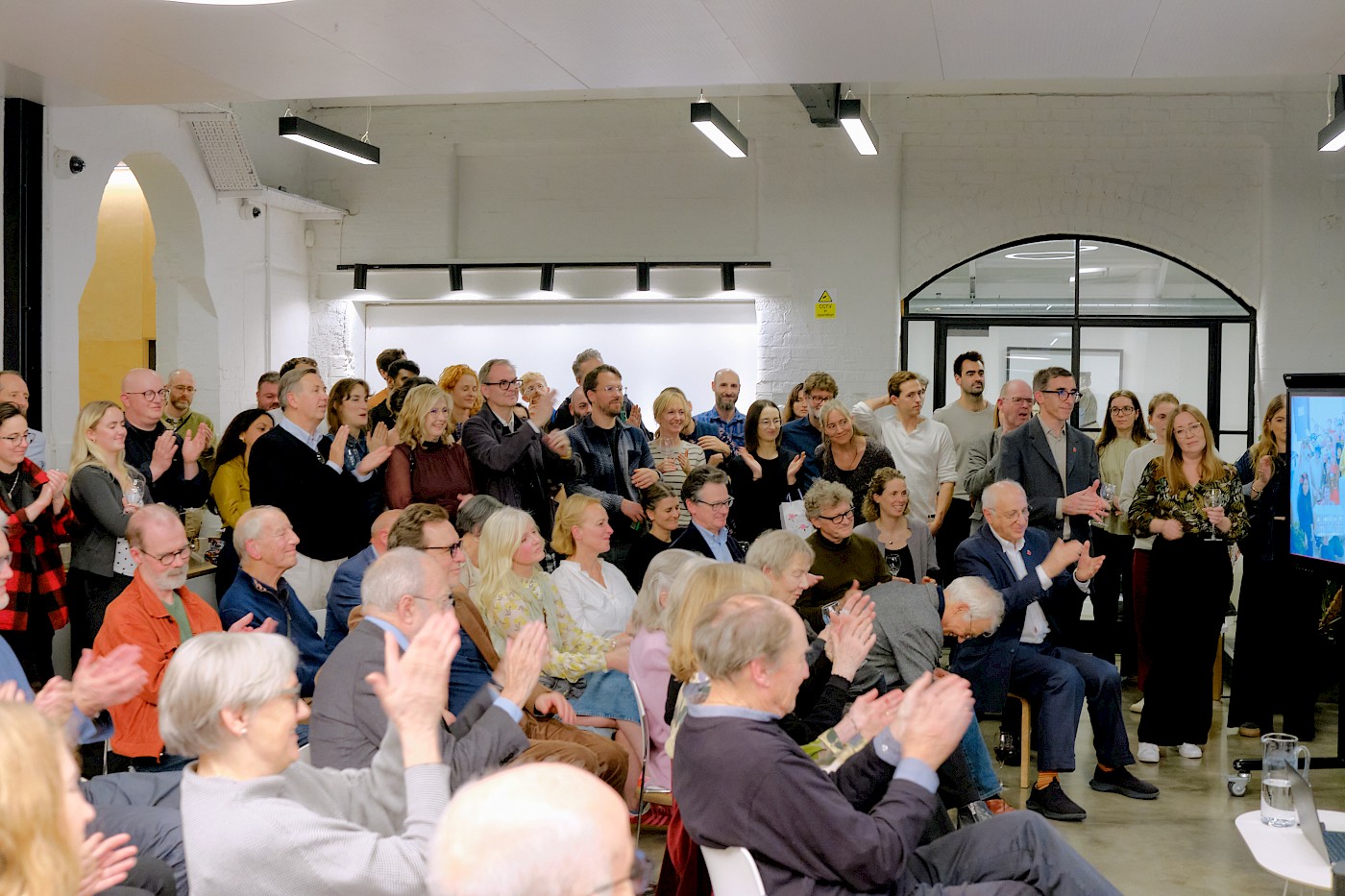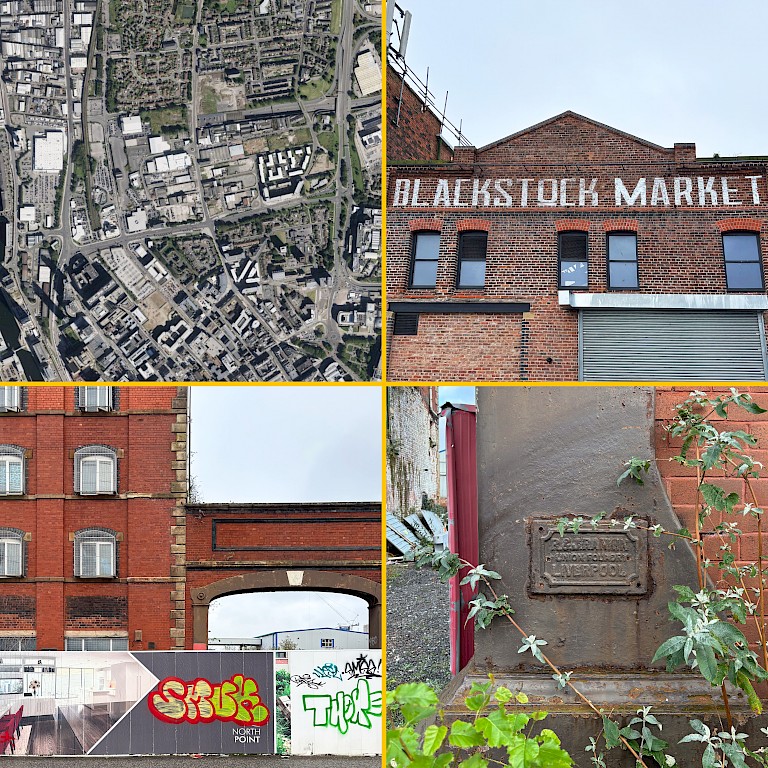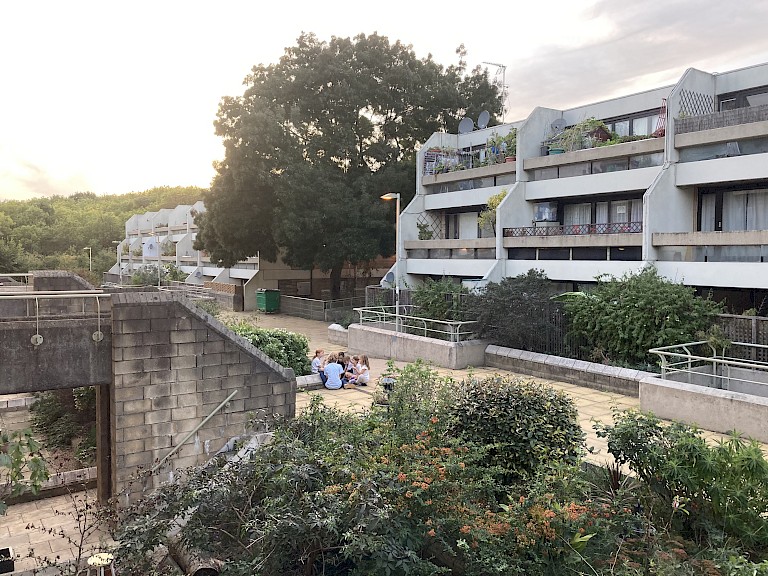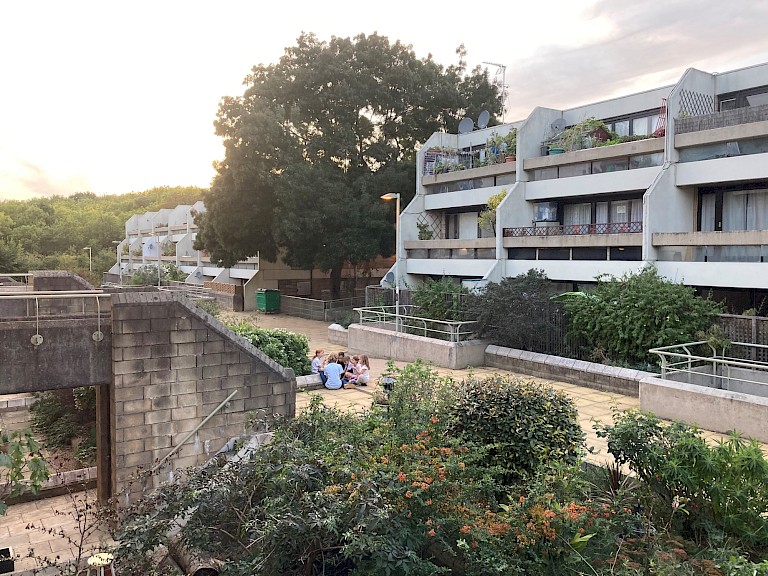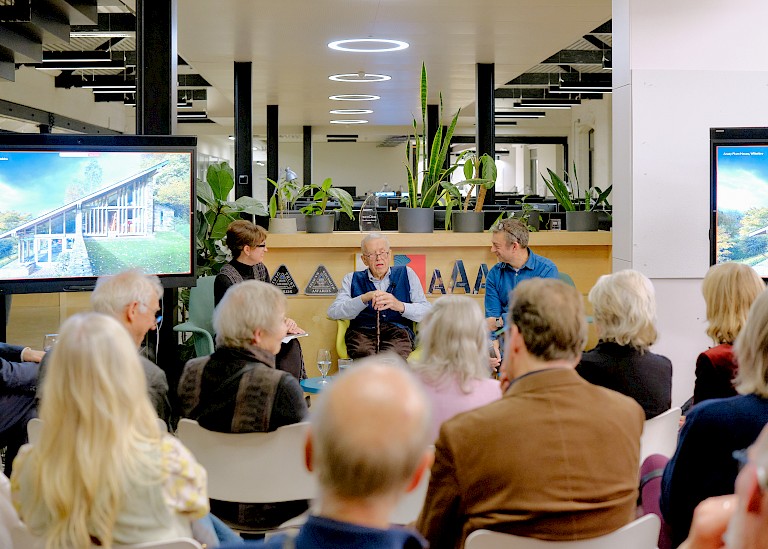
On Thursday, 6 November, we brought together colleagues past and present, family, and friends to celebrate the extraordinary career of David Levitt: architect, mentor, and co‑founder of our practice. Building on his recognition earlier this year by the Architects’ Journal for his contribution to the profession, we organised a conversation that followed his journey from early influences to the projects and values that have shaped more than five decades of work.
David began by recalling his father, an architect designing local, small scale projects and homes for miners in the 1930s. This grounded, community‑minded approach would echo through David’s own career. After national service in the navy — and an improbable tank‑ride to Petra — he studied at Cambridge under Leslie Martin surrounded by an extraordinary cohort of tutors and students who would go on to design some of the most important buildings of the 20th century, including Patrick Hodgkinson and Sandy Wilson.
Upon graduating, early practice work with Arup exposed him to collaborative, multi‑disciplinary design. Alongside his work with the practice, David completed Ansty Plum in 1964, a small scale rural home, sited on a steep wooded slope, overlooking a group of C12th buildings. This sensitivity to site and blend of Aalto and Arts & Crafts detailing later underpinned many of David's larger projects.
However, it was The Brunswick Centre in Bloomsbury, working with Patrick Hodgkinson, which proved to be the turning point of David’s early career. Working together with David Bernstein for the first time, he developed the design for this revolutionary mixed‑use ziggurat urban development, intended to fund the Foundling Hospital and re‑imagine city living. Its stepped forms and daylight‑filled flats became a landmark of post‑war British housing.
David Levitt and David Bernstein then founded their own practice in 1968 with a clear social mission, catalysed by the era’s housing crisis and the film 'Cathy Come Home'. In parallel, they also established Circle 33 Housing Association, merging architectural pragmatism with a commitment to social reform. Early work involved converting derelict terraced houses into new homes for local people — “learning by doing,” as David put it — and discovering the potential in re‑use long before the term “retrofit” had been thought of.
The years that followed saw an expanding portfolio and an expanding team of architects, urban designers and landscape architects at Levitt Bernstein. The practice moved from Bedford Square to the German Gymnasium in King’s Cross, Oval Road in Camden and eventually to Kingsland Passage in Dalston. David’s colleagues in the audience remembered portfolio-free interviews, held over a glass of whisky and a culture that valued curiosity over experience. Alongside housing, the practice won cultural commissions, the first being Manchester’s Royal Exchange Theatre, a radical design supported by four structural points within the bomb‑damaged shell of the Cotton Exchange trading hall. It remains one of the city’s most beloved buildings.
By the 1980s and ’90s, the practice was pioneering resident‑led regeneration. Projects like Holly Street and Wick Village in Hackney rebuilt traditional streets and empowered tenants to write their own briefs — ground-breaking at the time. Collaborations with Pollard Thomas Edwards and others produced humane, crafted, daylight‑rich urban housing, while later projects such as the Bermondsey Spa regeneration in Southwark demonstrated how good design can add both social and economic value to an entire neighbourhood.
Innovation continued with the modular CASPAR apartments in Leeds, sustainable long before the term was common, and with major regeneration work in Dublin’s Ballymun, where on‑site design teams worked directly with residents, a masterclass in co‑production. These experiences fed into David’s lifelong passion for knowledge sharing: the Design for Homes initiative, the Housing Design Awards and two editions of the Housing Design Handbook, all stem from his belief that architects should pass on expertise, campaign for housing quality and support each other.
In later years, David returned to the Brunswick Centre, guiding its renewal without losing its radical spirit. And even in semi‑retirement he continued to explore sustainable building, most recently in a hands‑on collaboration with Studio Bark and University of East London students, constructing a timber building in Norfolk using reclaimed materials and zero‑plastic insulation.
The evening’s storytelling reminded us all why David’s influence endures: his commitment to architecture with social purpose, to invention at all scales, and to learning as a lifelong habit. As our packed studios in Finsbury Park collectively raised our glasses to him, applause filled the space — a fitting tribute to a career that has created so much, beyond the buildings themselves: friendships, knowledge, advocacy, so many neighbourhoods and communities... and, of course, Levitt Bernstein.

